Today was the coldest morning we have had so far. It was also the Off Day for the staff at Summit. The staff works tirelessly six days a week, so today was their day off to relax and maybe visit the sauna. There was no morning meeting today, so we all ate breakfast an hour later than usual. After breakfast, we took a quick group photo in our iconic red JSEP shirts.

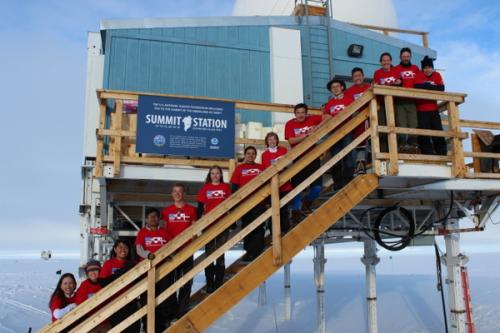
The mission for the day was to construct a back-lit snow pit under the direction of Dartmouth IGERT student, Gifford Wong. A snow pit allows scientist to see the different patterns in the layers of the snow. For instance, you can see the difference between summer and winter snow layers. In addition, you can see the different accumulation layers from the years, and you can also see the actual “big melt” layer. The big melt happened in 2012 where almost 98% of the surface ice of all Greenland melt.
The actual digging site was a little bit farther than Temporary Atmospheric Watch ObservatoryA location used for observing terrestrial and/or celestial events.. It was about 3/4 mile each way and was located in the Clean Air/Ice Zone, therefore, scientists can take samples from this zone and retrieve perfectly undisturbed samples.
Armed with shovels, our jobs were to dig a hole that was 2 meters wide by 3 meters long by 2 meters deep. Therefore, the snow pit’s volume would be 12 cubic meters. In front of the snow pit, we dug another hole that allows the light shine through a wall of snow about 50 cm in width. Therefore, we will be able to sit in the snow pit and see the different layers in the snow. This hole was 1 meter wide by 2 meters long by 2 meters deep.
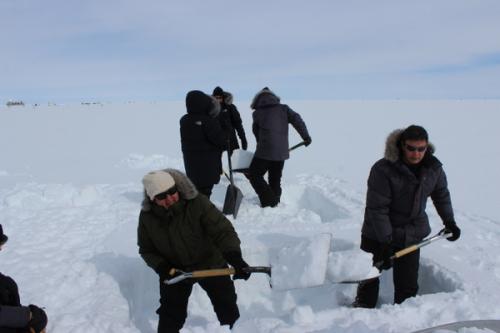
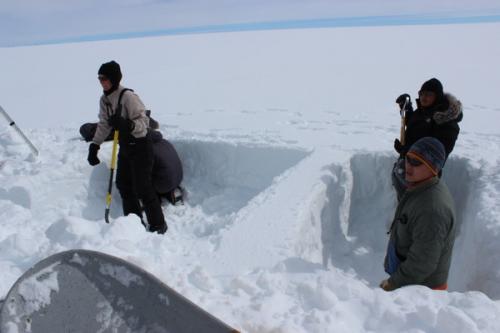
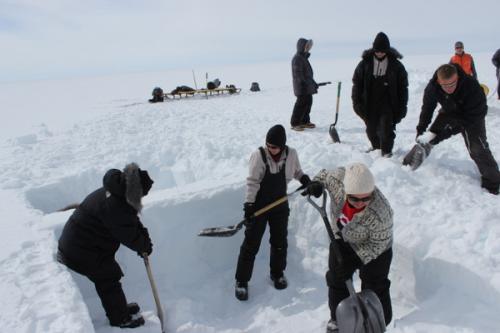
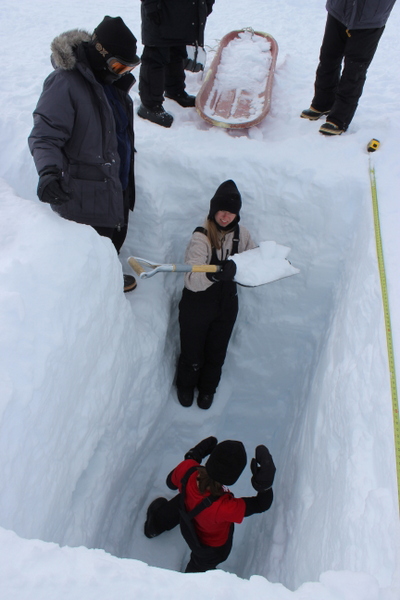
This day has definitely been the hardest day at Summit Station, because we had to walk back and forward to the snow pit we have worked on. The hard part about walking back and forward is the high elevation that makes the oxygen in the air less than we normally experience.
Ernie was outside the Big House when a lost soul came and gave a little chirp for help. It was a little bird! Amazing, out here in the cold camp at 3000 meter altitude, the bird did not seem to be that uncomfortable to be that far away from its natural habitat
In the evening David Noone gave us a presentation about snow pits, and how they are used by scientists. He also told us about how people can use them to go back in time and see how the weather has been, and due to that he can see if some of the weather layers can be compared to what we experience today. He also told us about his idol, Willi Dansgaard (Niels Bohr Institute, Copenhagen). Willi predicted that with the help of an ice core, you would be able to see how the climate had been, due to the oxygen and hydrogen isotopes it had inside. Willi could predict this because of his own experiments using rain samples and the (at the time) brand new technology -- a mass spectrometer.
Words of the day (English/Danish/Spanish/Greenlandic)
Snow Pit – sne grav – bloque de nieve -
Digging – gravning – cavar - Nivanneq
Weather Report:
Temperature: -9°C, 16°F
Wind chill: -16°C, 3°F
Pressure: 679 mb
Wind speed: 11KN , 218 SW
Pressure altitude: 10692 ft.


Comments